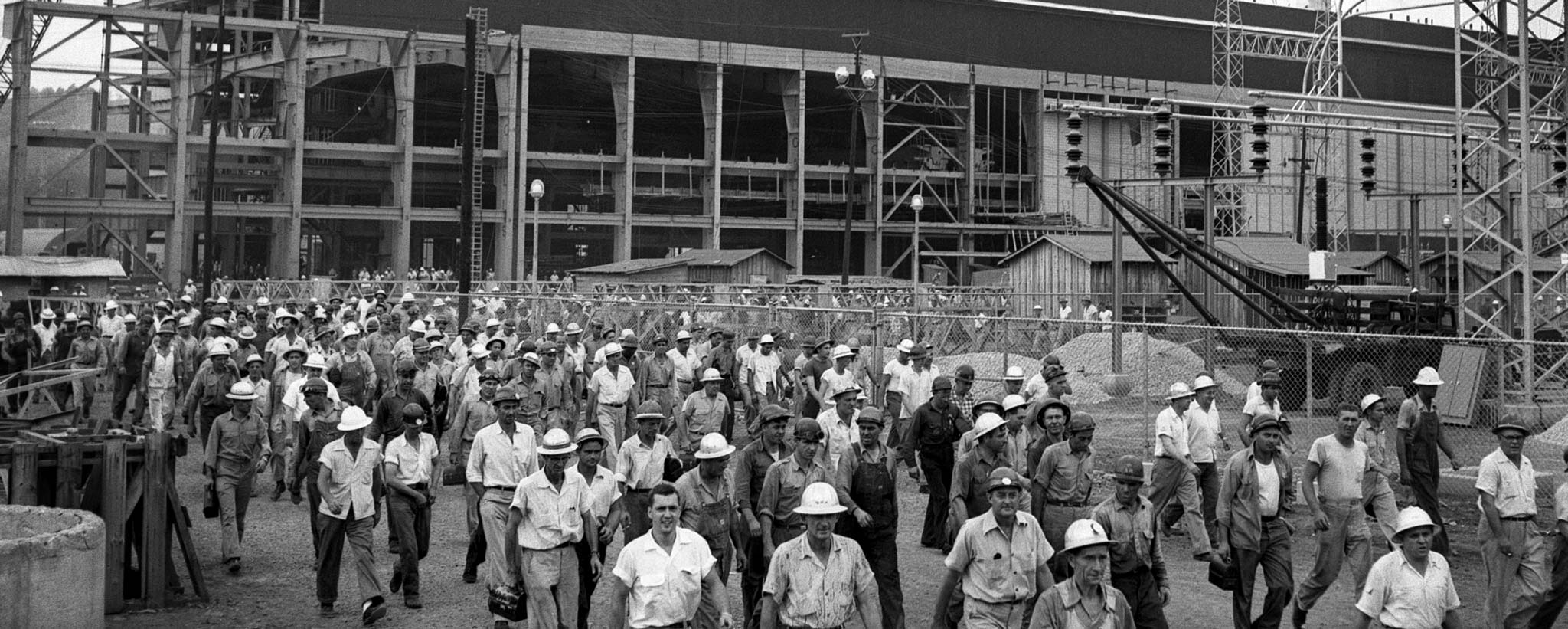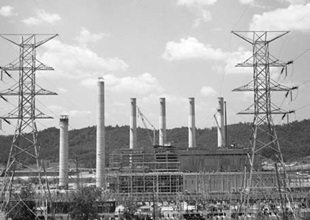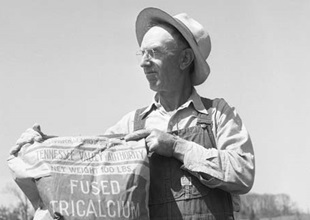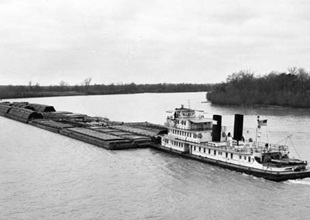
The 1950s
By the end of the war, TVA had completed a 652-mile navigation channel the length of the Tennessee River, and had become the nation’s largest electricity supplier.
Affordable electricity, the dependable year-round navigation channel, flood-free building sites and a cheap and abundant labor force led to industrial growth in the region throughout the 1950s. Soon the demand for electricity was outstripping TVA’s capacity to produce power from hydroelectric dams. As a result, TVA began building coal-fired steam plants, and by 1955, coal surpassed hydropower as the system’s primary power source.
Securing the additional federal appropriations needed to build coal-fired plants became problematic, so the utility sought the authority to issue bonds. In 1959, Congress passed legislation making the Tennessee Valley Authority power system self-financing.
Meanwhile, a revolution was taking place on Tennessee farms thanks to TVA-developed fertilizers and improved management techniques. TVA’s agricultural programs became a model for today's agricultural extension services. Its new fertilizers and test-demonstration method of introducing updated farming practices were adopted throughout the nation.




